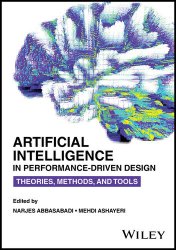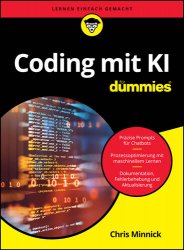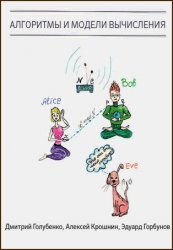 Название: Artificial Intelligence in Performance-Driven Design: Theories, Methods, and Tools
Название: Artificial Intelligence in Performance-Driven Design: Theories, Methods, and ToolsАвтор: Narjes Abbasabadi, Mehdi Ashayeri
Издательство: Wiley
Год: 2024
Страниц: 304
Язык: английский
Формат: epub
Размер: 39.2 MB
Artificial Intelligence in Performance-Driven Design: Theories, Methods, and Tools explores the application of Artificial Intelligence (AI), specifically Machine Mearning (ML), for performance modeling within the built environment. This work develops the theoretical foundations and methodological frameworks for utilizing AI/ML, with an emphasis on multi-scale modeling encompassing energy flows, environmental quality, and human systems.
Artificial intelligence (AI) has emerged as a ubiquitous force in today’s world, asserting its influence across an expansive spectrum of human endeavors. AI, as defined by Margaret A. Boden in AI: Its Nature and Future, “seeks to make computers do the sorts of things that minds can do”. At its core, AI endeavors to engineer computational entities capable of performing tasks traditionally associated with human cognition and to facilitate a synthetic replication of human abilities such as communication, learning, perception, problem‐solving, and reasoning. In pursuit of this, the discipline is methodically segmented into distinct yet interconnected subfields, for example: Machine Learning (ML), which learns from data to enable informed decision‐making; natural language processing (NLP), which deciphers and constructs human language; computer vision (CV), which interprets visual data; and robotics, which imparts autonomy to machines for task execution. These diverse subfields underpin AI's quest to forge machines that operate with a semblance of human intelligence, enhancing human capacities and spearheading a revolution in technological innovation.
Across the various chapters in this book, ML and its application to the built environment offers an array of methodologies tailored to distinct learning paradigms, each leveraging data to enhance design, planning, and operational efficiencies. Fundamentally, ML is categorized into several core approaches: supervised learning, which employs labeled datasets to instruct algorithms on pattern recognition and outcome prediction, is essential for tasks such as predicting building energy consumption and classifying buildings by energy efficiency levels. This approach has become fundamental for developing predictive models that inform sustainable architectural practices. Conversely, unsupervised learning leverages unlabeled data to discover latent patterns and correlations, enabling applications like the clustering of buildings according to energy usage or the application of dimensionality reduction techniques to distill complex data into actionable insights. Reinforcement learning broadens this spectrum by focusing on the iterative process of decision‐making through direct interaction with environments, proving pivotal in scenarios such as the optimization of building façades, building and urban layouts, traffic management, and the operational dynamics of smart grids. Additionally, generative algorithms introduce the capability to synthesize new data samples based on predefined parameters, expanding the creative scope within performance‐driven design and planning. Together, these applications underscore the transformative potential of AI and ML in redefining the built environment, pushing the boundaries of traditional architectural paradigms toward more efficient, responsive, and sustainable outcomes.
Deep Learning, as a branch of ML and AI, stands at the forefront of technological advancements, transforming the built environment sector. Categorized by neural networks designed to mimic the complex processing layers of the human brain, Deep Learning surpasses traditional data analysis techniques by its capacity to learn from and interpret vast amounts of data autonomously. This capability enables the identification of complex patterns and relationships within data, significantly enhancing accuracy in predictive analytics, image processing, and autonomous system controls. Deep Learning’s advanced analytical prowess is particularly beneficial in predictive modeling for various performance metrics, such as energy consumption, and in enhancing automated and optimized design processes. By employing Deep Learning, designers, planners, and researchers in the built environment are equipped with powerful tools for driving innovation, improving sustainability, and responding to complex design and planning challenges. The integration of deep learning signifies a major advancement in utilizing data for creating smarter, more efficient, and sustainable solutions within the built environment. It also highlights the broad potential of AI and ML technologies to transform and improve how we develop built environments.
Скачать Artificial Intelligence in Performance-Driven Design: Theories, Methods, and Tools
[related-news] [/related-news]
Комментарии 0
Комментариев пока нет. Стань первым!















